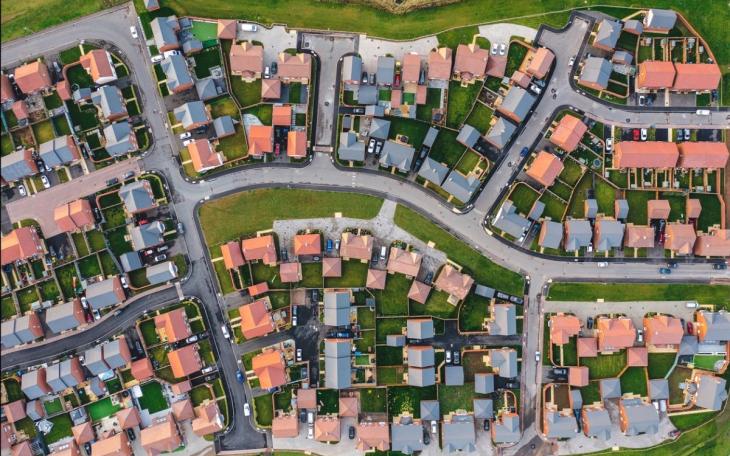Gove-watch

Last month the Conservatives lost over 1,000 council seats - the upper end of their worst expectation management. But they didn’t only lose them because 13 years in power takes a toll on any government and the last few have been particularly bruising. Beyond the national media’s (often misplaced) obsession with what it means for the next election, a good few of the local results were won by “nimby” opposition parties. Greens in Mid Suffolk and Lib Dems in the southern home counties have run campaigns against local plans or specific developments (often renewable energy sites).
In essence, while the national message is that the Conservatives are not in step with an increasingly Labour-tempted electorate, the local situation is that the Blue Wall is leaving the Conservatives for more solidly anti-development opposition. As Lib Dem leader Ed Davey dusts off the comedy hammer to smash the oversized-cardboard-brick wall again, he also sends a message that there will be no building here.
Meanwhile, as Joe Stephens pointed out in Politics & Planning in May, Labour is seeking to make housebuilding a key election issue with a ‘back the builders, not the blockers’ promise. It’s a tough tightrope to walk for the responsible Secretary of State Michael Gove. So, what are the Conservatives doing? So far, doubling down and playing into Labour’s creation of a dividing line. In what looks like a direct response to the catastrophic local losses (including in Michael Gove’s own Surrey Heath District), the Party has started a new campaign: “help protect our green belt”, promoting the prime minister’s commitment not to build on the greenbelt and Gove’s removal of local authority housing targets. keepourgreenbelt.co.uk now brings you to a Conservative campaign page. Gove himself was photographed campaigning in Selby with the new leaflets.
There’s also been further indication of the direction of travel on planning system reform. Remember Building Better, Building Beautiful? That commission chaired by Nicholas Boys Smith and the late Roger Scruton. The design code idea made it to the 2020 White Paper as a way of building in certainty early. Meeting a design code would apparently give local authorities more control, but assure developers of an approval where a proposal met requirements.
Building on that, this week Gove offered a supportive forward to another Policy Exchange report, Better Places by Ike Ijeh, which argues for a Placemaking Matrix (“PAX”) to quantify the subjective “placemaking” element of developments. To give a score to “what the place feels like, how people react to it, how popular it is or what kind of character or identity it maintains.” Scoring on a survey of 76 questions such as, “Is street furniture generally well-integrated into the public realm?” and “Does the development contain public art?” a development gets a numerical score and is ultimately given an Ofsted-like one-word verdict. This report should then form part of the planning consideration like any other report or issue.
In three text cases, Ijeh ranks Accordia, Cambridge as “outstanding”; the Nine Elms redevelopment as “poor”; and Lochgelly regeneration, Fife, in-between as “good”. I’ve already seen some LinkedIn contacts askance at the conclusions, and the mere principle that the supposedly subjective can be made objective. But then, I suppose that’s the debate, and the planning process ultimately needs an answer which is by its nature objective. And the author admits it will need to be applied flexibly to allow for different situations. Like BRE light guidance, maybe.
Policy Exchange has a good record of getting its policy ideas adopted by Conservative governments. Planning is usually difficult to explain to the layman. Perhaps further quantifying can help. Oh, and public consultation is also a section of the matrix that produces the scores. Which is where SEC Newgate comes in.









